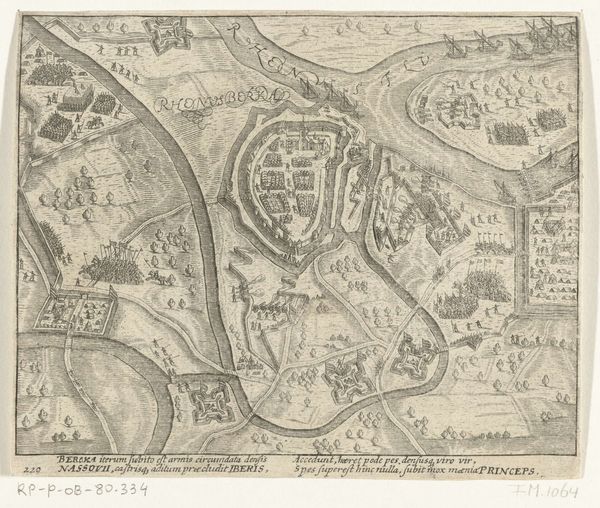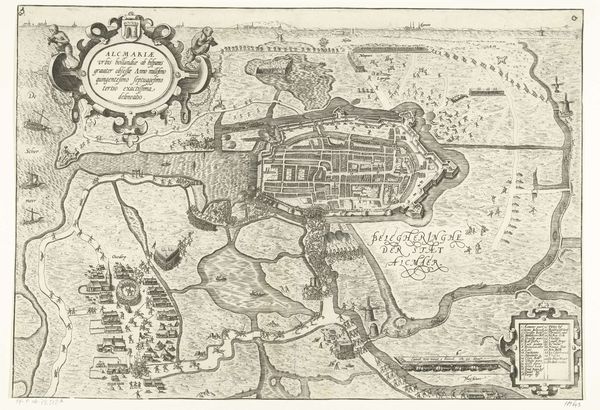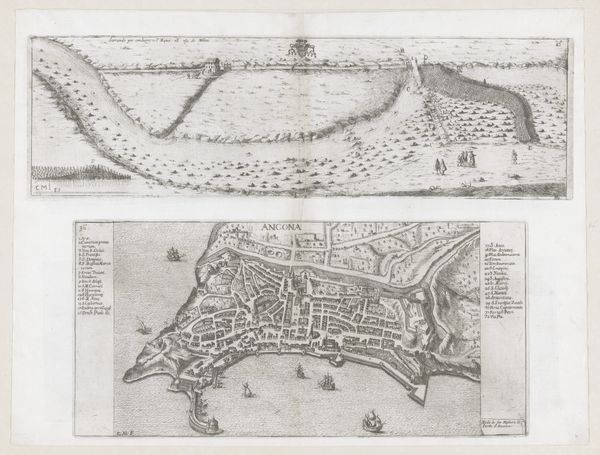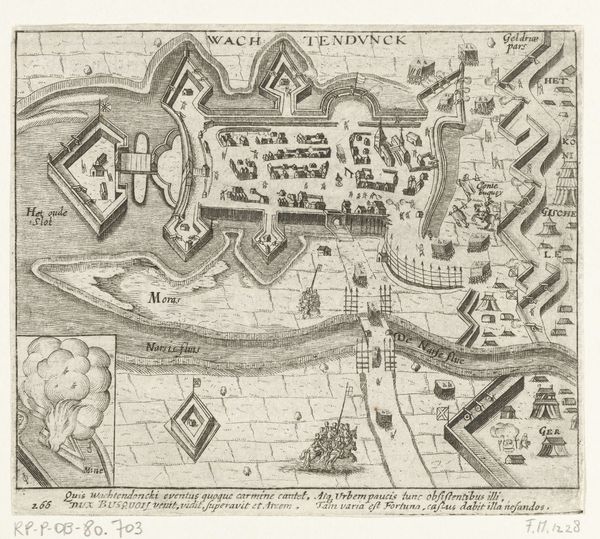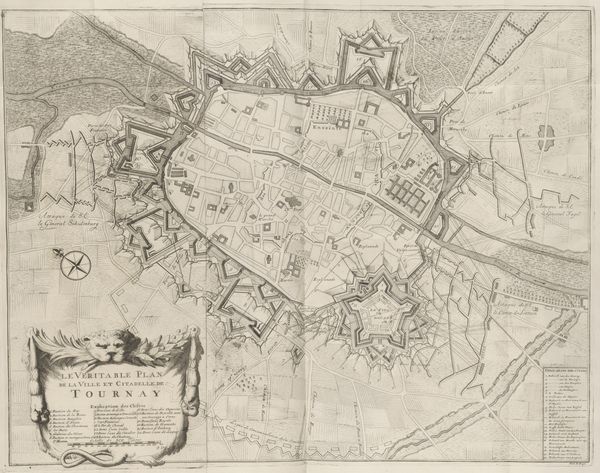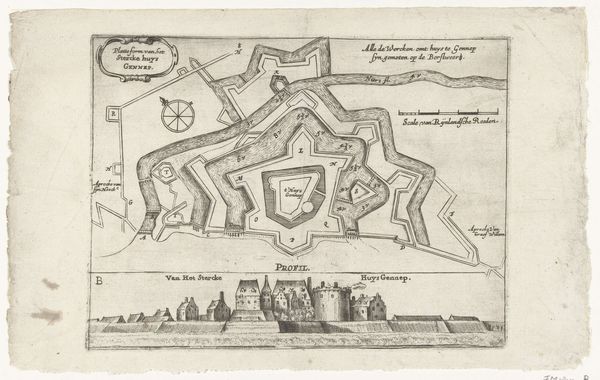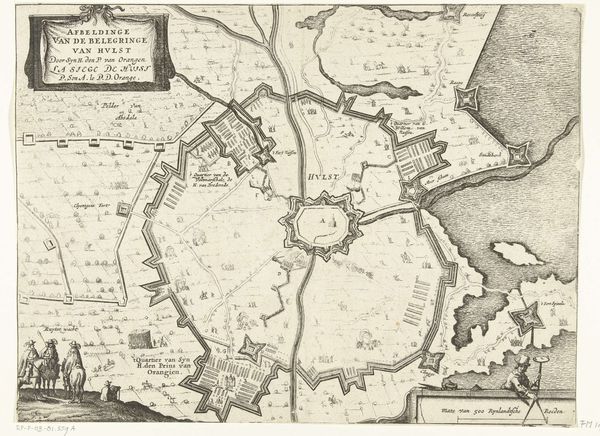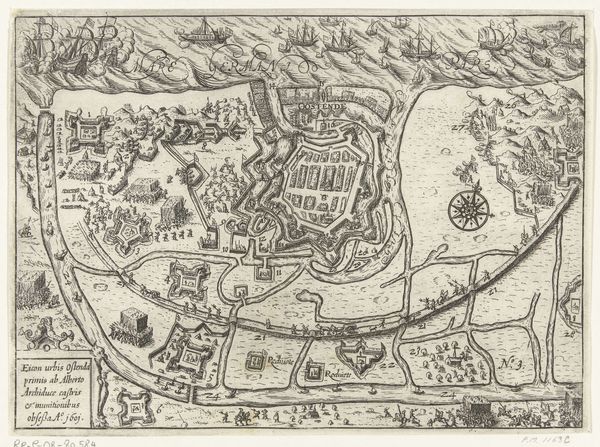
print, engraving
# print
#
geometric
#
cityscape
#
history-painting
#
engraving
Dimensions: height 200 mm, width 266 mm
Copyright: Rijks Museum: Open Domain
Curator: This engraving from 1693, titled "Plattegrond van Turijn," offers a detailed map of Turin. It's currently housed here at the Rijksmuseum. Editor: It strikes me as a carefully constructed fortress, the way the city is depicted, completely enclosed by these imposing fortifications. It almost feels less like a city and more like a piece of military equipment, albeit a rather intricate one. Curator: Exactly! The social and political landscape of the time certainly influenced this portrayal. Cities were essentially strategic assets, centers of power and trade but also potential targets, which greatly shaped urban development. Consider the immense resources, the very labor of creating these detailed prints! This reveals not just the physical space but also power structures and control over information. Editor: And yet, if we focus on the engraving itself, consider the precision in line and the geometry dominating every aspect of its composition. This isn’t just functional; the perfect grid layout, the sharp angles, the clarity… it speaks of Enlightenment ideals of order and reason being literally imposed onto the landscape. Look at how the rivers almost act as a frame for all the urban planning that went inside them! Curator: Yes, and the print's function goes far beyond mere aesthetics. Prints like these served practical purposes, guiding urban planning, informing military strategy, even bolstering civic pride. They were tools of governance as much as objects of art. The cityscape reflects and reinforces socio-economic values from the seventeenth century. Editor: Still, can we also see the beauty inherent in these plans? The use of line to define space and suggest depth? It's as beautiful an exercise in abstraction as it is a useful reference document. The artist—cartographer, really—is creating something that engages us formally as well as informatively. The figures added at the upper corner, how are these important to our interpretation? Curator: Absolutely, the embellishments with cherubic figures alongside keys, serve both ornamental and symbolic purposes, subtly conveying notions of divine sanction, territorial ambition, or royal authority. Their placement directs how we perceive the image within larger power dynamics of the period. Editor: Ultimately, it is the visual representation, both meticulous and compelling, that provides a window into the mindset and aesthetic preferences of that period. A fascinating confluence of utility and art! Curator: Indeed. Analyzing its context and considering its design provides a deeper understanding of the complexities embedded within this "Plattegrond van Turijn."
Comments
No comments
Be the first to comment and join the conversation on the ultimate creative platform.



